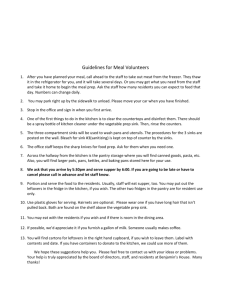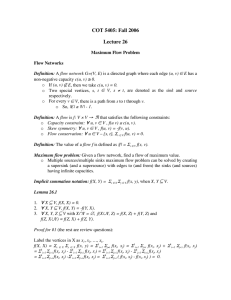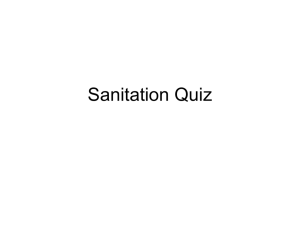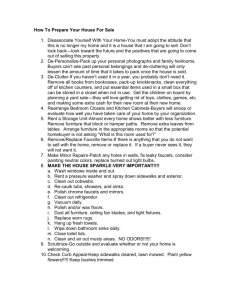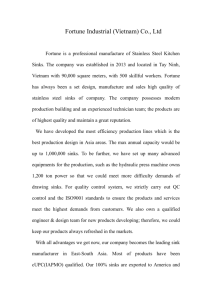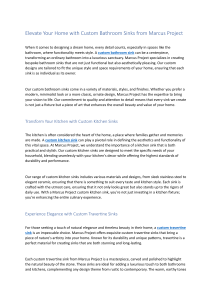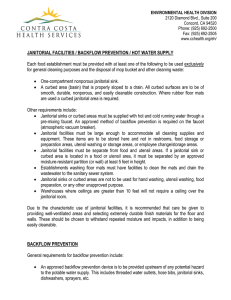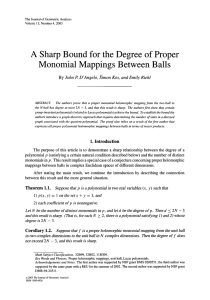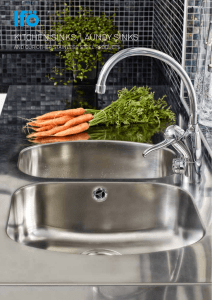Health Dept. Plan Preparation & Review Notes
advertisement
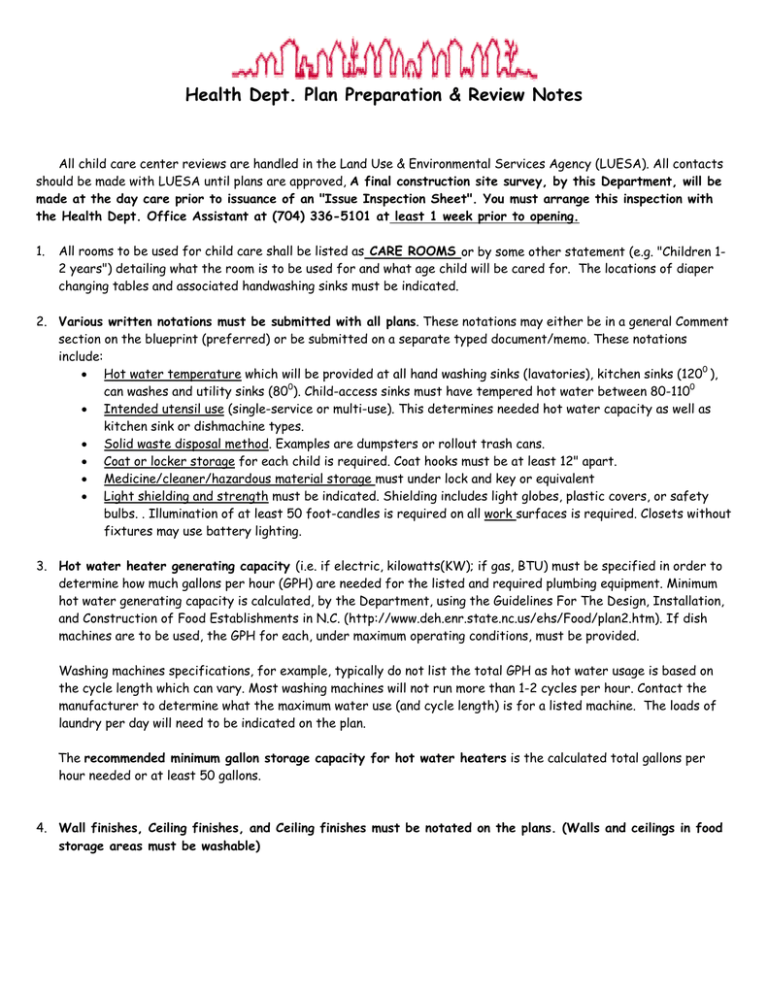
Health Dept. Plan Preparation & Review Notes All child care center reviews are handled in the Land Use & Environmental Services Agency (LUESA). All contacts should be made with LUESA until plans are approved, A final construction site survey, by this Department, will be made at the day care prior to issuance of an "Issue Inspection Sheet". You must arrange this inspection with the Health Dept. Office Assistant at (704) 336-5101 at least 1 week prior to opening. 1. All rooms to be used for child care shall be listed as CARE ROOMS or by some other statement (e.g. "Children 12 years") detailing what the room is to be used for and what age child will be cared for. The locations of diaper changing tables and associated handwashing sinks must be indicated. 2. Various written notations must be submitted with all plans. These notations may either be in a general Comment section on the blueprint (preferred) or be submitted on a separate typed document/memo. These notations include: • Hot water temperature which will be provided at all hand washing sinks (lavatories), kitchen sinks (1200 ), can washes and utility sinks (800). Child-access sinks must have tempered hot water between 80-1100 • Intended utensil use (single-service or multi-use). This determines needed hot water capacity as well as kitchen sink or dishmachine types. • Solid waste disposal method. Examples are dumpsters or rollout trash cans. • Coat or locker storage for each child is required. Coat hooks must be at least 12" apart. • Medicine/cleaner/hazardous material storage must under lock and key or equivalent • Light shielding and strength must be indicated. Shielding includes light globes, plastic covers, or safety bulbs. . Illumination of at least 50 foot-candles is required on all work surfaces is required. Closets without fixtures may use battery lighting. 3. Hot water heater generating capacity (i.e. if electric, kilowatts(KW); if gas, BTU) must be specified in order to determine how much gallons per hour (GPH) are needed for the listed and required plumbing equipment. Minimum hot water generating capacity is calculated, by the Department, using the Guidelines For The Design, Installation, and Construction of Food Establishments in N.C. (http://www.deh.enr.state.nc.us/ehs/Food/plan2.htm). If dish machines are to be used, the GPH for each, under maximum operating conditions, must be provided. Washing machines specifications, for example, typically do not list the total GPH as hot water usage is based on the cycle length which can vary. Most washing machines will not run more than 1-2 cycles per hour. Contact the manufacturer to determine what the maximum water use (and cycle length) is for a listed machine. The loads of laundry per day will need to be indicated on the plan. The recommended minimum gallon storage capacity for hot water heaters is the calculated total gallons per hour needed or at least 50 gallons. 4. Wall finishes, Ceiling finishes, and Ceiling finishes must be notated on the plans. (Walls and ceilings in food storage areas must be washable) 5. Refrigeration storage must be adequate to meet the needs of the number of children served. Provide the cubic feet and make/model of the refrigerator (cut sheet preferred). For example, if your facility proposes to be licensed for 100 children and the food service type is individual bagged/boxed/cooler lunches from home, you will be required to refrigerate all these bags, coolers, etc. in approved type refrigerators, regardless of whether the parent packed the meal in cool packs, etc. All potentially hazardous foods must be refrigerated, by the day care, at 450 F or below. The use of domestic refrigerators carries various menu restrictions with it. When domestic refrigeration equipment is used, except in child care centers licensed for fewer than 13 children and located in a residence, the following provisions shall apply: (1) except for thawing under refrigerated conditions, potentially hazardous foods shall not be prepared prior to the day that such foods are to be served; (2) potentially hazardous foods that have been heated shall not be reheated or placed in refrigeration to be used in whole or in part on another day; and (3) salads containing potentially hazardous food shall not be prepared on site. Prohibited salads include chicken salad, egg salad, tuna salad and crab salad. 6. Food preparation work surfaces must be adequate to meet the needs of the number of children requesting licensing for and the type of food served. Food preparation in carerooms is not permitted unless it is in a designated infant/toddler food service area. Countertop areas adjacent to kitchen sinks and designated as meeting sink drainboard requirements cannot be used as food preparation work surfaces. 7. Kitchen sink location or placement must be such that kitchen staff can stand in front of any portion of the compartments or drainboards. Placement of sinks in corners where the front of one or more drainboards is blocked by adjacent equipment is prohibited. 8. Dishmachines must be provided with two drainboards. The door essentially acts as one of those drainboards and a separate pre-rinse/pre-flush unit or countertop acts as the second one. Although these pre-rinse units are not required for dishmachines, they are recommend. 9. Kitchen equipment placement must always follow the rule of separation of operations for 1) clean and dirty utensils; 2) raw and prepared/cooked food products; and 3)food preparation and utensil washing/handling. 10. Double-vanity handsinks (i.e. two-basin handsinks in the same counter), installed to meet either the infanttoddler foodservice, diaper-changing, or bathroom sink requirements, must be at least 36" apart measuring from the inside edge of each sink basin. Some operations may be required to maintain greater distances then these listed above and install permanent separation devices (e.g. panels) to delineate food prep and diapering activities. Revised 01/06
